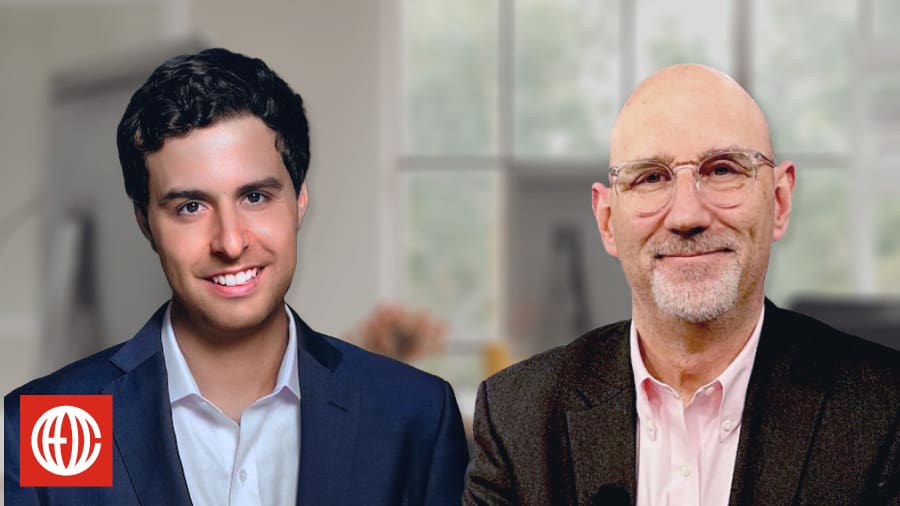
Guest: Edward Hughes, a coach at CEO Coaching International. Edward is a seasoned entrepreneur and business leader with two decades of experience as a CEO and three decades in senior leadership across Technology, Consumer Products, and Sporting Goods companies. He’s also an Adjunct Professor at the University of California, Irvine, teaching General Management and Entrepreneurship in MBA and Executive MBA programs.
Quick Background: There’s no one way to be an effective business leader. But the CEO’s unique alchemy of personality, strategy, and vision has to inspire trust from employees at every level of the organization. If your employees don’t believe in you, they won’t be willing to follow you through the inevitable ups and downs on the way to Making BIG Happen.
On today’s show Edward Hughes discusses his comprehensive leadership philosophy, which emphasizes building trust to drive success and foster a high-growth culture.
Keys to Effective Leadership from Edward Hughes
1. Let your best people do their best work.
Edward really didn’t want to call his company’s new golf ball “The Noodle.” But his marketing and sales team at Maxfli was convinced that the name was a catchy fit for the product: a ball that plays long and feels soft. So Edward went to bat for his team’s vision.
“We expected to sell about 10,000 dozen in the test market,” Edward remembers. “We sold 50,000 dozen in five weeks. It became a huge success. And at the national sales meeting, my team gave me a big sword saying, ‘Thank you, I’ve got your back.’ They trusted me to help them and give them the power to do this, even though I didn’t necessarily think, from a logic standpoint, this was the right thing. I believed in that team. And so I supported them. Building that trust in leadership is critical.”
Some leaders are so preoccupied with being right that they won’t even consider that they could be wrong. Opening up BIG decisions to a healthy, respectful debate can brighten blind spots while also making team members feel like they had their say even when a specific choice doesn’t go their way. That can make it much easier for everyone to transition into the “commit” stage once the “debate” stage is over.
“As a leader, you don’t have all the answers,” Edward says. “I like to listen more than I like to talk. Listening to my team’s rationale, we came up with a plan and had the opportunity to test it. And if the tests were great, then we went forward. So, for me, it was about listening. It was about making sure that the team knew that I believed in them. We may have a disagreement, but once we made the decision to move forward, we’ve all got to move forward.”
2. Authentically balance hard skills and soft skills.
Edward Hughes believes that true leadership requires authenticity, logical competence, and empathy. At the start of his career, Edward admits that he leaned a little more heavily on the logic he had just learned at Cambridge and Harvard Business School.
“What I learned later on in my career is I’ve got to lead through people,” Edward says, “and to get people on board, not only do I have to be competent, but I have to be authentic in who I am, and also let them know that I believe in them and I care about them. If you don’t have all three, I don’t think people will go through the wall and create magical things for you.”
Where they will go is out the front door. If your best people can’t trust you to be yourself, they aren’t going to trust you with the company’s direction, or their careers. Stop trying to act like a “CEO” and be the authentic, empathetic leader your company needs.
“There’s been a tendency to hero worship the iconic CEOs that have been very successful and have these larger-than-life personalities,” Edward says. “Leaders who just turn up and do their jobs, people aren’t writing stories about them. And so people think that CEOs have a bigger personality than anybody else. I don’t want to coach somebody to try to be like Elon Musk or Steve Jobs. Don’t fake it. Be genuine. Be humble. Be competent. Be authentic. Be empathetic. Be persistent. Great leaders do a great job of setting high standards and having high devotion to their people. That’s when you get the best out of people. You can get this done without trying to be an iconic person that you’re really not. Be yourself.”
3. Stay steady during adversity.
A crisis will bring out either the best or the worst in a leader. Holding yourself and your subordinates accountable when things are going badly is essential to maintaining the trust you’ve built up while the going was good. But so is maintaining your composure. An overreaction to a crisis can be just as damaging as an underreaction. And in some cases, staying true to your company’s vision, planning, and core competencies is a better response strategy than taking an abrupt left turn.
“When I was at TaylorMade, our number one product was a metal driver,” Edward Hughes says. “Overnight, the United States Golf Association changed the rules on drivers. And it meant that our lead product was now outlawed. As soon as this news hit, people were calling me, texting me, and the sales people were very concerned. So we gathered the team together, and said, ‘What is it we know? What information don’t we know? What can we ask the USGA for?’ And we found out that if you’re already in production of drivers, then you could finish and sell that run. So we made a plan. There was concern. Would retailers accept our product? Well, it turned out consumers wanted the longest-hitting driver possible. We sold every single one of these drivers, and it turned out to be fantastic for us. But at the time, it looked like a disaster. Keep calm, be competent in your decision-making, and come up with a plan. Because sometimes what looks like a disaster at the start turns out to be a great opportunity.”
4. Drive growth through culture.
“When you think about a high-growth culture, what you’re looking for ultimately is business success driving top-line revenue, driving EBITDA, that’s creating opportunities for people,” Edward says. “People are thriving in that situation. Growth creates a whole bunch of opportunities. People choose to go to work in a particular company. They could go somewhere else. So if you’re creating a culture where you’re not getting their hearts and their minds, and they’re just coming in to do the work, you’re not getting the best out of those people, and those people ultimately will go somewhere else.”
So many of the major trends in business right now — including AI integration, restructuring C-suites, and high-EQ leadership — stem from companies trying to achieve the harmony between growth and experience that Edward is describing. In a true high-growth culture, it’s not just profits that grow: it’s your business’ capacity to Make BIG Happen for all the people it touches.
“People want to work in places not just for the money,” Edward Hughes says. “They come to work for a bigger reason than that. They want to make a dent in the universe. They want to do something fantastic in their career. Whatever it is that they want to do, help them achieve that, and they’ll help you achieve what the organization’s goals are.”
Top Takeaways
1. Build trust. If your people believe in you, they’ll believe that the work they’re doing matters.
2. Create opportunities. Empower top talent to take ownership over today’s to-do list and their long-term career goals.
3. Be yourself. Work with your CEO coach on becoming the best version of yourself, not a second-rate version of someone else.
Links:
4 Ways to Build Trust as the CEO– Here’s how CEOs can create a trustworthy culture that keeps everyone aligned to Making BIG Happen.
Leading with Integrity: The CEO’s Blueprint for Sustainable Success– Unless CEOs carry out their duties with integrity, a dazzling earnings report or IPO will be a short-term accomplishment.
About CEO Coaching International
CEO Coaching International works with CEOs and their leadership teams to achieve extraordinary results quarter after quarter, year after year. Known globally for its success in coaching growth-focused entrepreneurs to meaningful exits, the firm has coached more than 1,500+ CEOs and entrepreneurs across 100+ industries and 60 countries. Its coaches—former CEOs, presidents, and executives—have led businesses ranging from startups to over $10 billion, driving double-digit sales and profit growth, many culminating in eight, nine, or ten-figure exits.
Companies that have worked with CEO Coaching International for two years or more have achieved an average revenue CAGR of 25.9%, nearly 3X the U.S. average, and an average EBITDA CAGR of 39.2%, more than 4X the national benchmark.
Discover how coaching can transform your leadership journey at ceocoachinginternational.com.
Learn more about executive coaching | Meet our world-class coaches







